Road diet case study
Highway 78/Lake Avenue in Battle Lake
Battle Lake is a growing city of approximately 1,000 residents in west-central Minnesota. A decade ago, the city was not growing – in fact just the opposite. In 2009, community concerns about declining school enrollment, lagging tourism, and empty storefronts led to the creation and adoption of a community vision plan. Over the past decade, the city has made investments that leveraged public and private funding to make the plan a reality. One of the investments was a reconstruction of MnDOT State Trunk Highway 78, which is also Battle Lake’s main street. The highway project, completed in 2014, utilized a road diet, complete street principles, and Americans with Disabilities Act best practices. In 2018, Battle Lake boasts a vibrant main street, many new businesses, increased tourism, and a strong arts community.
- The 12-mile Glendalough Trail was competed in segments to provide access to and within Glendalough State Park. This project is considered by some to be a major catalyst for the successes seen to date.
- Visits to Glendalough State Park have risen from 50,000 in 2013 to 85,000 in 2017.
- Local storefronts were improved with assistance from the Housing and Redevelopment Authority.
- Twenty-one new businesses have opened in Battle Lake since 2014 including a hotel.
- In 2017, a new fire hall was constructed and the arts center was renovated.
Pedestrian-friendly alley on State Trunk Highway 78
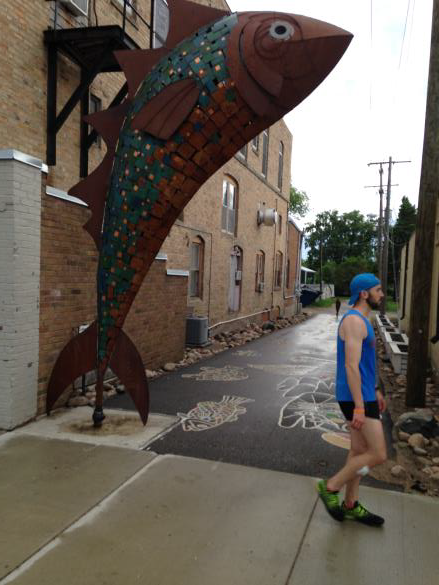
The local trail system
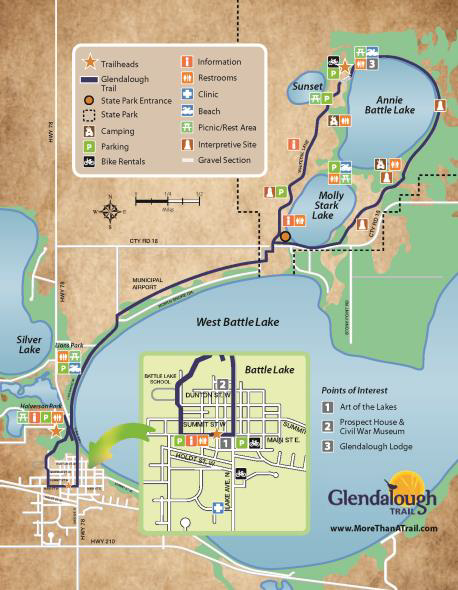
New walkways and ramps on State Trunk Highway 78
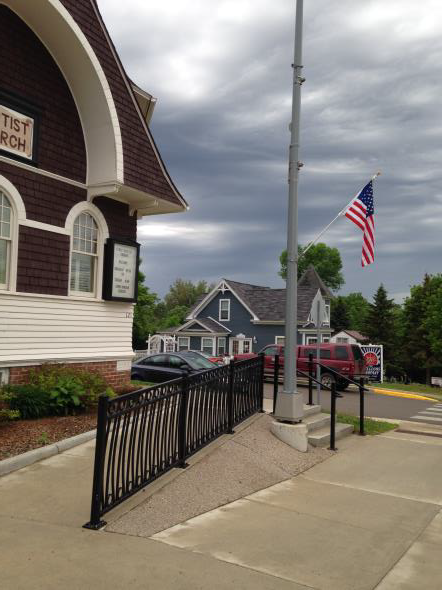
Reconstruction of State Trunk Highway 78/ Lake Avenue
Highway 78 runs north-south through Battle Lake. The road carries about 4,000 vehicles per day – many more in the summer. With community urging, the city requested a full reconstruction of Highway 78, rather than MnDOT’s proposed mill and overlay. The street given a road diet was narrowed and the number of travel lanes was reduced from four to three plus on-street parking. The MnDOT/city concept plan, completed in 2011, included replacement of underground city water and sewer infrastructure, artistic bike racks, benches, and planter boxes, and wider sidewalks and curb ramps and walkways compliant with the Americans with Disabilities Act.
Highway 78 before Reconstruction – 2013
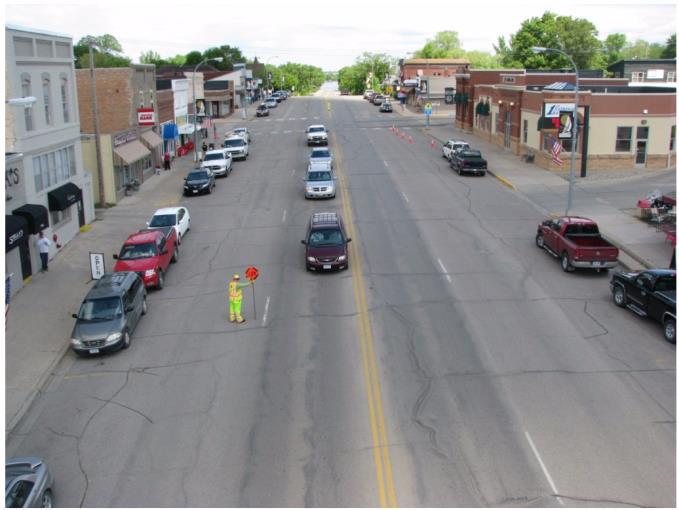
Highway 78 after Reconstruction – 2014
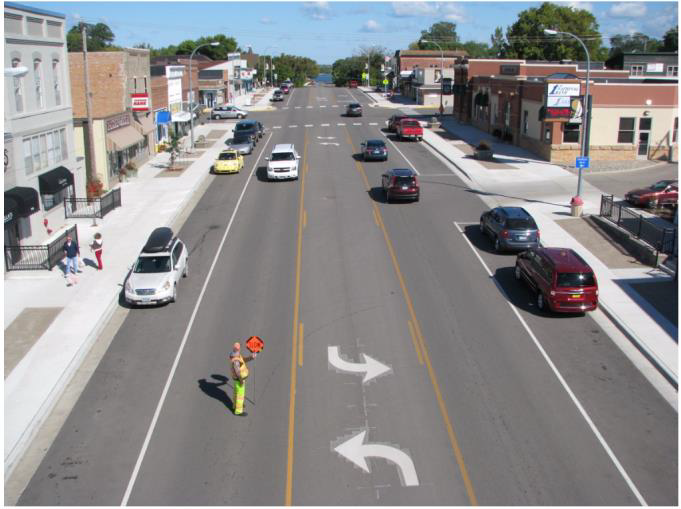
Details about the reconstruction of State Trunk Highway 78
- Travel lanes are now 12 feet wide, the center turn lane is 14 feet, and parking lanes are 10 feet.
- Eighty percent of the cost was paid by MnDOT District 4; the city paid for 20 percent.
- Stormwater transport was slowed to prevent erosion in Battle Lake.
- Winter maintenance has not been a problem.
Significant bicycle, pedestrian, and livability improvements like those on Highway 78 are much more affordable to a local community as part of a planned roadway reconstruction by MnDOT. Options and funding are more limited for a mill and overlay.
MnDOT’s roadway design guidelines for State Trunk Highway 78, which is a minor arterial with slow speeds and low traffic volume, would have allowed a narrower roadway – travel lanes as narrow as 10 feet and a parking lane of 7-10 feet. Narrower lanes and narrower street width are known to be associated with fewer crashes.
(See MnDOT Technical Memorandum No. 17-12-TS-05 and No. 18-09-TS-06. Technical Memos are an addendum to MnDOT’s Road Design Manual.)
Crash information
According to MnDOT, injury and property damage crashes on the new section of Highway 78 in Battle Lake have been reduced in the four years following the road diet. The local police chief reports greatly improved visibility for pedestrians.

